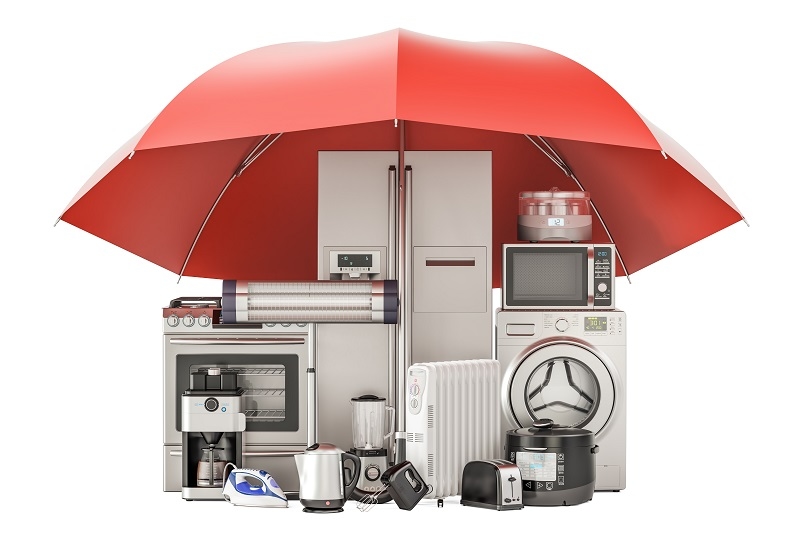Stop Fire & Intrusion with Advanced Threat Detection
Threats are no longer limited to just break-ins right now. Thus, staying one step ahead of danger is no longer a luxury but a necessity. From silent water leaks to undetected fires or unauthorized entries, the risks move fast and evolve faster.This is the reason advanced threat detection system should be the priority for your home. It is no longer about just sounding alarms, but it is about intelligent monitoring and swift response to solve problems.This blog will help you understand what a modern threat detection setup should look like and walk your through the quiet intelligence behind these systems.How an Advanced Threat Detection System Thinks Ahead?A truly advanced threat detection system doesn't wait for disaster to knock. It listens, it senses, and it acts - before the danger grows. These systems go beyond the basic motion sensor or smoke alarm.Instead, these systems integrate a network of different intelligent devices that can do the following set of tasks:It can detect environmental anomalies like smoke, heat, gas, and flooding.These systems can monitor unauthorized movement, especially in restricted zones.It can even analyze data patterns for early signals of emerging threats.Lastly, coordinate response actions in real time, to make sure there is no delay.This system is vital in the modern world because it eliminates the blind spots. Whether it is a slow-leaking pipe behind a wall or a window cracked open in a storm, advanced systems are designed to alert and respond before anyone else even notices.Advanced Threat Detection: Beyond the Usual SuspectsMany still associate advanced threat detection with high-end security installations. But its scope goes far beyond camera feeds and alarm triggers. It covers a broader set of risks that modern environments now face regularly.Some of the silent yet dangerous threats include:Fire hazards triggered by faulty wiring, overheating appliances, or flammable materialsFlood risks from burst pipes, overflowing drains, or poor weatherproofingStructural stress caused by vibrations, temperature shifts, or nearby constructionIntrusions that don't involve doors being kicked in - but rather someone with a key who shouldn't be thereWith smart detection tools, each of these threats is treated seriously and addressed immediately, often with layered alerts - to devices, control panels, and even emergency services.Top Pick: Top Home Safety Tips 2025: Secure Your Family & PropertyBulletproofing Systems: Threat Detection and Response in Real TimeWhat sets modern setups apart is their ability to detect and respond - without delay. The phrase threat detection and response may sound technical, but it simply means this: recognize danger and act fast.Key capabilities often include the following:Instant notifications sent to property managers, homeowners, or teamsAutomated system lockdowns for sensitive or vulnerable areasRemote overrides in case a human need to take control urgentlyIntegration with other safety protocols like fire suppression or HVAC systemsIn some setups, if a temperature spike is detected, the system not only alerts personnel - it may shut down circuits, activate exhaust fans, or reroute airflow. The system doesn't just notice problems. It works to prevent the damage from spreading.Rise of Identity Threat Detection and ResponseAs digital and physical spaces merge, the role of identity threat detection and response grows. Today, threats often come not from strangers but from compromised credentials, cloned access cards, or insiders misusing privileges.This branch of smart security focuses on who is acting - and how. It's less about broken doors and more about breached trust.Here's how identity-focused detection works:Tracks login activity and access behaviorFlags unusual patterns like odd hours or unexpected locationsBlocks access dynamically if risk is detectedCross-checks physical presence with digital activityFor example, if someone badges into a facility at 2 a.m. but their profile shows remote work status, the system might flag the access as suspicious and trigger a verification loop.It's not just about knowing what is happening. It's about knowing who is behind it - and if they belong.Insider Threat DetectionNot all dangers come from outside. In fact, some of the most damaging threats are internal - unintentional or not. That's where insider threat detection becomes crucial.These systems don't accuse. They observe. And when something doesn't look right, they speak up.Common triggers for insider alerts include:Unusual system usage patternsAttempts to access restricted files or areasRepeated failed login attemptsSudden data transfers or downloadsUnscheduled activity during off-hoursInsider threat detection isn't about mistrust. It's about awareness. A distracted employee might misplace sensitive files. A contractor might overstep access limits. Early detection prevents these small slip-ups from becoming big disasters.Where Advanced Threat Detection Saves the Day?To understand the power of an advanced threat detection system, consider a few real-world moments:In a commercial building, a slow pipe leak behind drywall is caught early by a humidity sensor - saving thousands in water damage.A school lockdown system automatically activates when unauthorized access is detected near a sensitive wing.A residential building's system spots a sudden gas spike, shuts off the main valve, and alerts residents - all before anyone notices a smell.A secure lab denies entry to a former employee whose access credentials had not yet been revoked - avoiding a serious breach.Each moment shares a common theme: prevention. Because when the system sees what humans can't, response time shrinks, and risk drops.Building a Safer Tomorrow with Smart DetectionThere's something reassuring about having silent protectors at work - monitoring, analyzing, and reacting behind the scenes. That's what a modern advanced threat detection system delivers.From the boardroom to the boiler room, from server racks to sprinkler pipes, everything is under watch - not in a paranoid way, but in a proactive one. This isn't about creating fear. It's about building resilience.The world won't get less complex, but with smart systems in place, response can stay one step ahead.Must Read: Top 10 Emergency Apps for Home Security You Need in 2025Final ReflectionThreats come in many forms like fire, water, intrusion, digital misuse and human error with each problem having its own speed, stealth, and impact. However, with the right detection systems that is thoughtfully designed, these threats lose their element of surprise.An advanced threat detection system is not just tech but it provides you peace of mind in a time where every second matters, this is priceless.





